 Petzlover
Petzlover Both Bengal and Nebelung are originated from United States. Both Bengal and Nebelung are having almost same weight. Both Bengal and Nebelung has almost same life span. Both Bengal and Nebelung has same litter size. Bengal requires Moderate Maintenance. But Nebelung requires Low Maintenance
Both Bengal and Nebelung are originated from United States. Both Bengal and Nebelung are having almost same weight. Both Bengal and Nebelung has almost same life span. Both Bengal and Nebelung has same litter size. Bengal requires Moderate Maintenance. But Nebelung requires Low Maintenance
 What an exquisite coat the Bengal cat has. It looks like the coat of a wild cat and can have spots, marbling, and rosettes, but it is domesticated, developed from hybrids – the spotted Egyptian Mau and the Asian Leopard cat.
What an exquisite coat the Bengal cat has. It looks like the coat of a wild cat and can have spots, marbling, and rosettes, but it is domesticated, developed from hybrids – the spotted Egyptian Mau and the Asian Leopard cat.
It is the only domestic breed of cat that has rosette markings. It is Jean Mill of California that you associate the Bengal cat with, and she conducted a number of graduate classes in genetics.
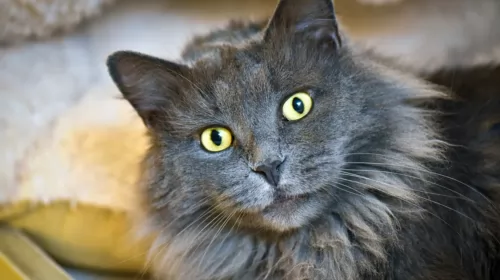 The Nebelung is a new breed of cat originating in the USA. It is a close relative of the short-haired Russian Blue.
The Nebelung is a new breed of cat originating in the USA. It is a close relative of the short-haired Russian Blue.
The name Nebelung means 'creature of the mist' in German. This is because of the cat’s beautiful silver-blue coat.
It was in the mid-1980s that Cora Cobb had a domestic shorthair cat mated with a Russian Blue, with one kitten from the litter having long, blue hair. She started a breeding program and in 1987 the Nebelung was given status as an entirely new breed by The International Cat Association as well as the American Cat Fanciers Association.
 The Bengal looks like a wild cat and it can weigh up to 7kg. It can reach a height of 70cm with long, muscular legs and almond-shaped eyes which are green or blue.
The Bengal looks like a wild cat and it can weigh up to 7kg. It can reach a height of 70cm with long, muscular legs and almond-shaped eyes which are green or blue.
When it comes to the coat of the Bengal cat, it has a wide variety of colors and patterns. The cat can be brown, black, red, grey, spotted, clouded, ticked or rosette.
There are Bengal breeders that claim that their Bengals are hypoallergenic so that they won’t cause an allergic reaction with their owers. This is something that hasn’t been scientifically proved and in fact many will say that there isn’t such as thing as a hypoallergenic cat.
The Bengal is a medium to large-sized cat, being long and lean and muscular. As a low shedder, it is believed the Bengal is a hypoallergenic cat breed – a cat less likely to cause an allergy with its human owners.
When you bring a Bengal cat into your home, you’ll find they are energetic, smart, and playful and they love cavorting around in water.
People who have owned a Bengal say that the cat is friendly and that it enjoys interacting with humans. They’re cats capable of forming strong bonds with their human family, becoming affectionate and loyal. They in turn want to receive lots of loving attention.
They’re intelligent too and are quick to learn. You have to remember that these are part wild cat and that they are only classed as tame from the 4th generation (T4).
The cat has wild traits so it is only natural that it likes to hunt so don’t be alarmed when your Bengal presents you with dead mice, moles, and birds.
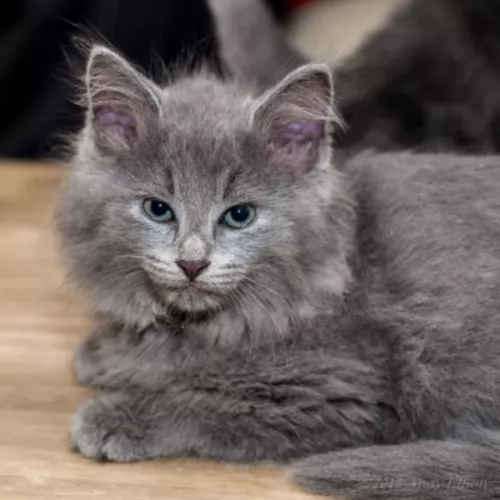 The beautiful Nebelung is a rare domestic medium-sized cat with a long muscled body and long legs. They weigh between 3 and 6kg. The oval-shaped eyes are green or a yellow-green color and the eyes are large and pointed. The coat of the cat is long and thick with an undercoat and grey in color with the males and some females having a ruff round the neck.
The beautiful Nebelung is a rare domestic medium-sized cat with a long muscled body and long legs. They weigh between 3 and 6kg. The oval-shaped eyes are green or a yellow-green color and the eyes are large and pointed. The coat of the cat is long and thick with an undercoat and grey in color with the males and some females having a ruff round the neck.
The Nebelung is a lively, playful cat that is good-natured and loves to be around his human family. People who have owned them say they behave a lot like dogs. It means you can have him trained to walk on a leash.
He is somewhat aloof with strangers. He is a gentle cat and very intelligent, forming tight bonds with some special members of his human family. They love to be petted and stroked by this favorite human being.
The cat also communicates well. They like their litter box kept nice and clean and they can be quite finicky when it comes to their food.
Because of their playfulness, make sure you have lots of puzzle toys for him. They’re cats that like things to remain the same – no sudden changes for them as they become stressful. Because of their quiet natures, they don’t relish the idea of wild, undisciplined children and would prefer to live in a home with a few adults,
 Bengal cats are intelligent and just like a dog he is clever at learning tricks and can even be taught things such as ‘sit’, ‘fetch’ or ‘lie down’. They actually make great companions as they are sensitive to their owner's moods and can even recognize human gestures and adapt their behavior to their owner's mood.
Bengal cats are intelligent and just like a dog he is clever at learning tricks and can even be taught things such as ‘sit’, ‘fetch’ or ‘lie down’. They actually make great companions as they are sensitive to their owner's moods and can even recognize human gestures and adapt their behavior to their owner's mood.
They’re vocal cats too and they like to communicate about their needs, being able to meow in different tones. They’re active cats and they want active owners – those who can spend time with them playing and even going on walks and hikes.
The Bengal certainly is a wonderfully companionable cat.
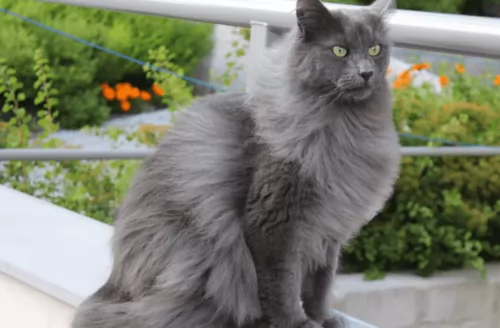 The Nebelung is a gentle, quiet cat that simply wants to live in harmony with the human family he loves.
The Nebelung is a gentle, quiet cat that simply wants to live in harmony with the human family he loves.
He prefers a quiet, consistent kind of lifestyle. He is active, social, and fun around them but is reserved with strangers.
He is a loyal and loving cat and can become dejected if he doesn’t receive the same amount of love and attention that he craves and which he is so willing to give.
 Hypertrophic cardiomyopathy (HCM) is a concern with the Bengal cat breed and this is a disease where the heart muscle becomes thick and unable to pump blood properly.
Hypertrophic cardiomyopathy (HCM) is a concern with the Bengal cat breed and this is a disease where the heart muscle becomes thick and unable to pump blood properly.
It’s a common genetic disease in Bengal cats. Cats used for breeding need to be screened each year to ensure no hypertrophic cardiomyopathy is present.
Another problem with the Bengal cat is Progressive retinal atrophy or PRA. Anyone wanting to breed Bengals should have their cat tested for this eye disease as the disease can lead to blindness.
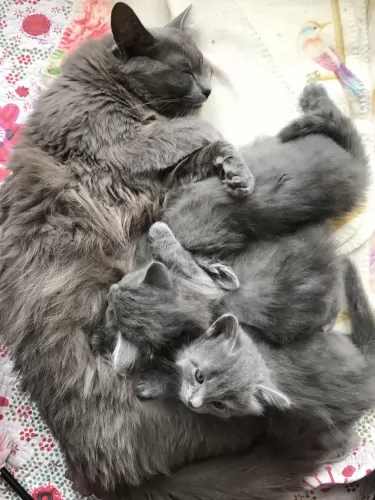 These beautiful cats don’t have many health issues. They are generally healthy cats.
These beautiful cats don’t have many health issues. They are generally healthy cats.
Don’t allow your cat to become overweight as this can bring on a host of health conditions. There was a time when cats didn’t get much older than 10 years of age, but with advancements in good nutrition and good veterinary care, a cat can reach 15 to 20 years of age.
Certainly, as your beloved pet starts to move into his senior years, he will face aging problems. Aging cats are susceptible to faltering vision, arthritis, hearing loss, thyroid problems gum and teeth disease, diabetes, incontinence, and even dementia.
Remember to continue feeding your senior cat the best quality cat food there is.
 You will need a secured outdoor area for your Bengal cat where he can play and climb. He will need these for his activity levels as well as stimulating toys.
You will need a secured outdoor area for your Bengal cat where he can play and climb. He will need these for his activity levels as well as stimulating toys.
Provide feeding and water bowls and also make sure that you provide your Bengal with a shallow swimming pool as this cat loves water.
The Bengal is a healthy cat breed so it is important to provide your pet cat with the best food there is and to ensure he gets checked out at the vet every year.
Most hybrid breed owners provide raw food as these cats are often sensitive to commercially manufactured food. Having said that, there are high-quality prepared cat foods that will provide your Bengal with everything needed for a healthy life.
Look at providing your pet with a good supplement to ensure your furry friend has every chance to be healthy and happy.
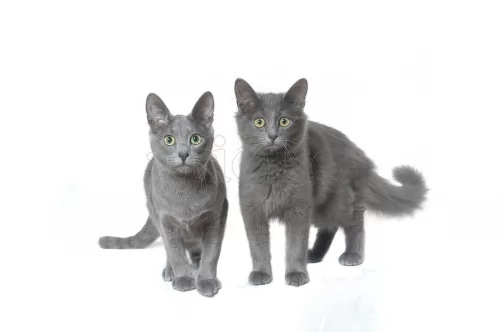 This cat, as a carnivore, should be fed a high- quality cat food that is high in protein. The poorer quality foods won’t have the right mix of vitamins and minerals – so important for your pet.
This cat, as a carnivore, should be fed a high- quality cat food that is high in protein. The poorer quality foods won’t have the right mix of vitamins and minerals – so important for your pet.
These inferior foods often lack the right nutrients and can make your cat sick. Make sure you give your cat a top protein diet with ingredients that must have taurine, an important amino acid.
The Nebelung has a long, double coat and even though the cat isn’t a heavy shedder, it will require a brush every week to prevent the coat from becoming tangled.
Make sure you have everything you need for welcoming a cat into your home. He will need food and water bowls, warm, soft bed, litter box, climbing tree, scratching post, collar, grooming accessories, and a cat-carrying box for when he needs to go to the vet.
Ensure you take your pet to the vet as soon as he shows signs of illness. There are some terrible cat illnesses and they can cause a lot of discomfort and pain for your furry friend.